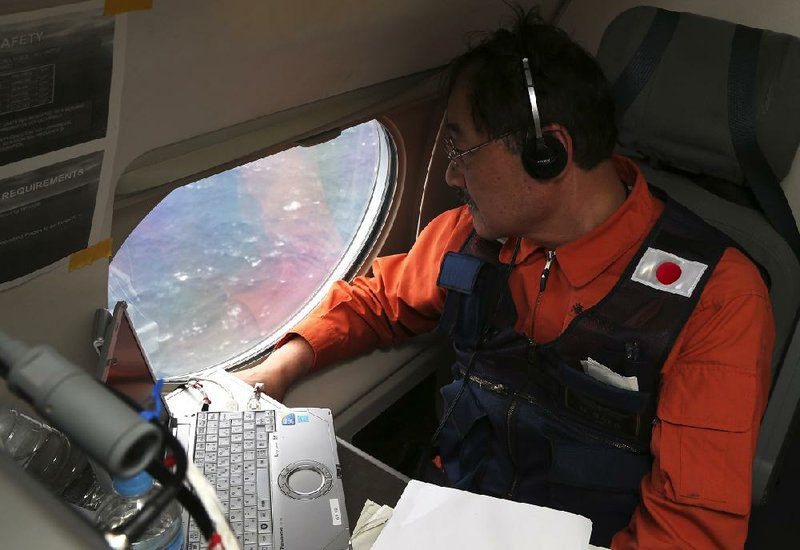KUALA LUMPUR, Malaysia - Radio communications between the cockpit of Malaysia Airlines Flight 370 and air traffic controllers before the plane disappeared early March 8 provide no apparent indication why the plane suddenly veered from its intended flight path to Beijing and vanished over the Indian Ocean, according to a transcript released Tuesday by the Malaysian authorities.
The transcript covers about 54 minutes, from just before the Boeing 777-200 pushed back from the gate at Kuala Lumpur International Airport to the last words from the cockpit with air-traffic personnel in Malaysia before they lost contact with the plane around 1:19 a.m. as it was approaching Vietnamese airspace.
Malaysian officials have said the actions of the plane - including its change of course and the disabling of its communication systems - suggested that someone on board had deliberately diverted it. As a result, the plane’s pilot, Zaharie Ahmad Shah, and his co-pilot, Fariq Abdul Hamid, have been under intense scrutiny.
In a statement with the transcript, Hishammuddin Hussein, Malaysia’s defense minister and acting transportation minister, said there was “no indication of anything abnormal in the transcript.”
But the banality of the communications, he said, did not change the opinion of investigators that up until the plane dropped off military radar, more than an hour after the cockpit’s last contact with air traffic controllers, Flight 370’s “movements were consistent with deliberate action by someone on the plane.”
The transcript’s release came as the international search for the missing plane continued in a vast area of the Indian Ocean. At least 11 aircraft and nine ships explored the latest search zone Tuesday, officials said, and for the first time Australia deployed an airborne traffic controller to help coordinate the many planes involved in the hunt and help avert midair collisions.
The searchers had to contend with rough conditions all day, including “heavy seas and strong winds,” the Australian Maritime Safety Authority said in a Twitter message.
After more than three weeks, no trace of the missing airliner has been found. On Friday, the focus of the search shifted to an area about 1,150 miles west of Perth, Australia, and a flotilla of ships started to converge on the zone as surveillance aircraft conducted daily flights.
Since then, crews aboard the planes and ships have spotted scores of floating items every day, but so far all the objects have turned out to be fishing equipment and other debris not related Flight 370.
The government agreed to release the cockpit transcript under pressure from journalists and relatives of people aboard Flight 370, who have demanded more details about the investigation and its progress. In his statement, Hishammuddin said the document had been kept confidential “as part of the police investigation.”
Three weeks ago, government officials provided what they said were the last words from Flight 370’s cockpit - “All right, good night” - and said they had been spoken by Fariq, the co-pilot. Some analysts said the phrasing seemed unusually casual.
But late Monday, Malaysia’s Transport Ministry revealed that the final voice transmission had actually been more routine: “Good night Malaysian three seven zero.”
Government officials offered no explanation for the discrepancy in accounts and now say they are unsure whether Fariq was the person speaking.But the sudden change reignited criticism of the government’s handling of the investigation, which has been marked by secrecy and contradictory public statements.
The transcript includes more than 40 exchanges from 12:25 a.m. to 1:19 a.m., beginning with someone in the cockpit wishing air traffic control in Kuala Lumpur “good morning,” and continuing as the plane taxis into position and takes off.
Once in the air, Flight 370 was transferred to another air traffic controller at a Malaysian radar station. About 1:19 a.m., as the plane approached Vietnamese airspace, the controller instructed the cockpit to shift over to Vietnamese air traffic control, a standard procedure.
“Malaysian Three Seven Zero contact Ho Chi Minh 120 decimal 9 Good Night,” the air traffic controller said, according to the transcript.
Four seconds later came the final words from the cockpit.
Front Section, Pages 2 on 04/02/2014

